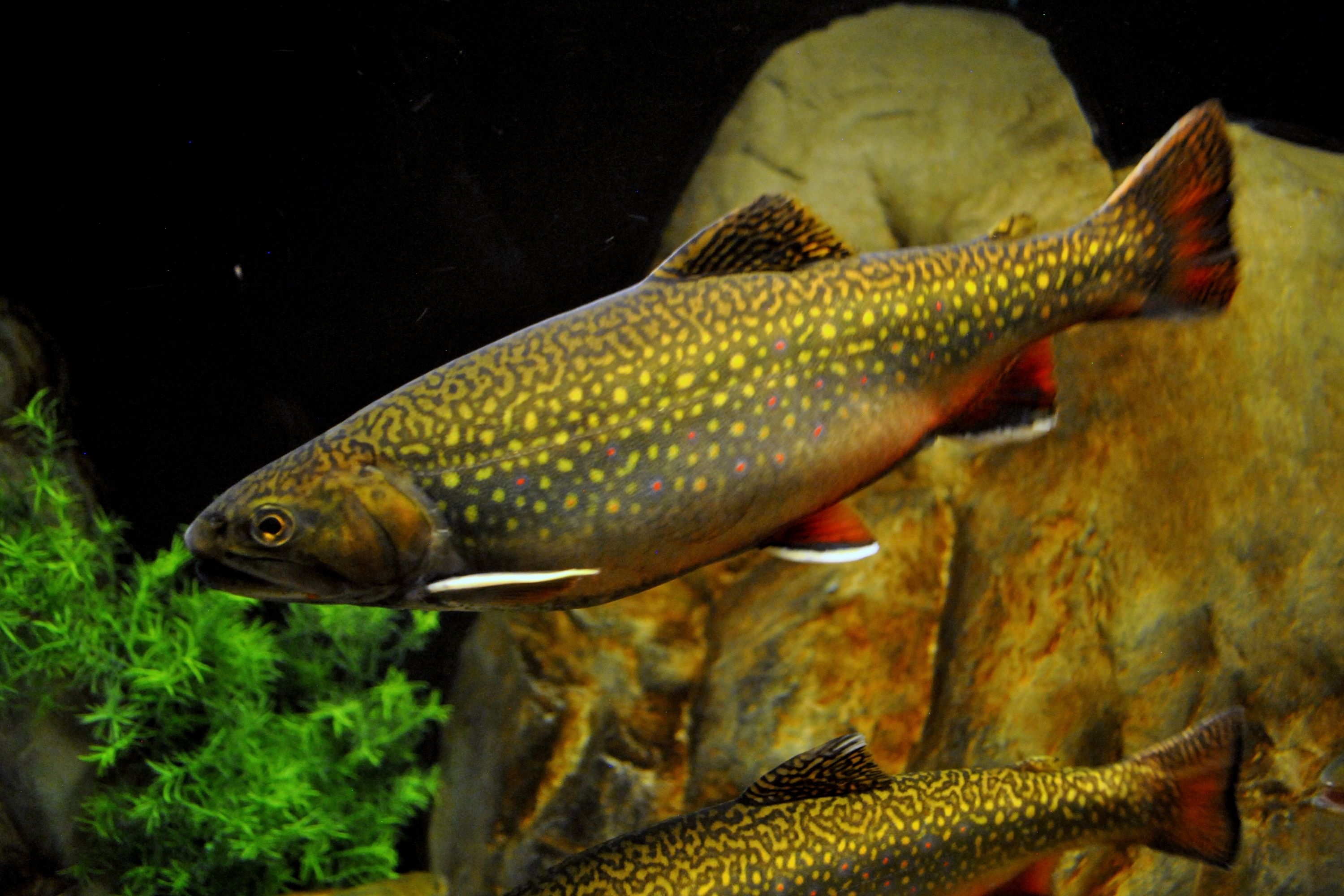Brook trout
(Salvelinus fontinalis)

Description
The brook trout (Salvelinus fontinalis) is a species of freshwater fish in the char genus Salvelinus of the salmon family Salmonidae. It is native to Eastern North America in the United States and Canada, but has been introduced elsewhere in North America, as well as to Iceland, Europe, and Asia. In parts of its range, it is also known as the eastern brook trout, speckled trout, brook charr, squaretail, brookie or mud trout, among others. A potamodromous population in Lake Superior, as well as an anadromous population in Maine, is known as coaster trout or, simply, as coasters. The brook trout is the state fish of nine U.S. states: Michigan, New Hampshire, New Jersey, New York, North Carolina, Pennsylvania, Vermont, Virginia, and West Virginia, and the Provincial Fish of Nova Scotia in Canada. The brook trout was first scientifically described as Salmo fontinalis by the naturalist Samuel Latham Mitchill in 1814. The specific epithet "fontinalis" comes from the Latin for "of a spring or fountain", in reference to the clear, cold streams and ponds in its native habitat. The species was later moved to the char genus Salvelinus, which in North America also includes the lake trout, bull trout, Dolly Varden, and the Arctic char. There is little recognized systematic substructure in the brook trout, but two subspecies have been proposed. On the other hand, three ecological forms are distinguished. The aurora trout, S. f. timagamiensis, is a subspecies native to two lakes in the Temagami District of Ontario, Canada. The silver trout, (Salvelinus agassizii or S. f. agassizii), is an extinct trout species or subspecies last seen in Dublin Pond, New Hampshire, in 1930. It is considered by fisheries biologist Robert J. Behnke as a highly specialized form of brook trout. Robert J. Behnke describes three ecological forms of the brook trout. A large lake form evolved in the larger lakes in the northern reaches of its range and are generally piscivorous as adults. A sea-run form that migrates into saltwater for short periods to feed evolved along the Atlantic coastline. Finally, a smaller generalist form evolved in the small lakes, ponds, rivers, and streams throughout most of the native range. This generalist form rarely attains sizes larger than 12 in (30 cm) or lives for more than three years. All three forms have the same general appearance.
Taxonomic tree:







